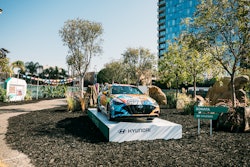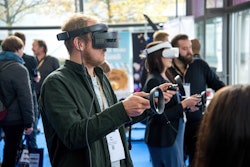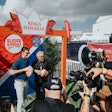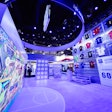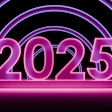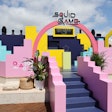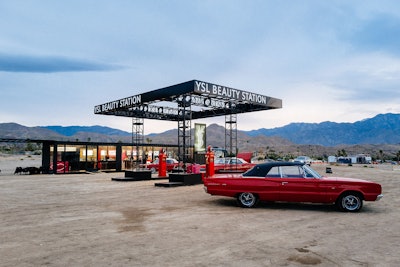
Austin Johnston is the founder and C.E.O. of AKJohnston Group, an Anaheim, California-based design and production firm with clients including YSL Beauty, Anheuser-Busch, ViacomCBS, Levi’s, and Hyundai.
It’s hard not to wonder what a post-COVID-19 world looks like for event agencies, producers, designers, and suppliers—but one overwhelming prediction is that experiential marketing will become highly digital. Who could disagree? As we had advanced live experiences with AR, VR, and streaming, these tech-focused tie-ins that were always viewed as “optional” will soon be considered a requirement in the planning process. This new need is something that we should all get on board with quickly.
That said, many are dismissing physical experiential events as a thing of the past as clients and brands move entirely to a digital or streaming approach. I keep hearing about a slow recovery, and for things to permanently become “high-tech” rather than “high-touch.” In my opinion, this could not be further from the reality that is ahead.
Consider the human element of what we do. The COVID-19 scenario has created new equity in experiential, and I think we can expect the value of analog experiences to increase exponentially from what we have come to know and accept from the past decade of a booming marketplace.
With the stress, uncertainty, and isolation, it has never been more desirable to stay connected with fellow humans and environments—and to create what I call an “analog experiential” experience. An example: Pre-dating this crisis was our YSL Beauty Station in the desert during weekend one of Coachella in April 2019. Amidst AR, VR, and digitally driven campaigns, we presented an activation that used scenic space and theater to allow guests to play and explore—without having any technology present. We turned a 3,000-person client goal into a 15,000-person analog roadside attraction that converted into 350-million digital impressions. The pop-up store was the most successful in the international history of both YSL Beauty and L’Oreal, separately.
So what is analog experiential? My coined reference for analog versus digital is best shown in my side-by-side analysis that pre-dates this crisis; it compares experiential touchpoints often considered in the strategy, design, and production phases of any campaign.
 Graphic: Courtesy of AKJOHNSTON Group
Graphic: Courtesy of AKJOHNSTON Group
Quite frankly, experiences should be designed for both: Focus on analog environments that inspire participants to create digital content that is shareable. Think of a children’s playground. It is our duty to bring the elements of physical play, social engagement, and tactile exploration to people—and if you think that this crisis has put an end to that, then you’ve never watched children on a rainy day.
So here is my outlook: Moving forward, clients are going to ask for a new “rain contingency plan” that will cover a digital version of their event, and it will be up to event producers to provide that. Just like having a “tented plan” or a back-up venue when it rains, clients will expect you to be able to pivot easily if an event needs to become remotely accessible.
Already we are seeing clients pivoting to this strategy and doing this even in a virtual world: After canceling its I/O Summit, for example, Google asked us to build playful, branded studio sets to live stream the announcements, technology, and workshops to their developers and partners. Is it the same? No—but neither is the impact of tenting your event location, yet both still require planning and production.
The fundamentals behind gathering, touching, exploring, and playing aren’t going anywhere soon—and neither is the live events industry. Stay strong and carry on.
See BizBash's coverage of how COVID-19 is affecting the event industry at bizbash.com/coronavirus.




